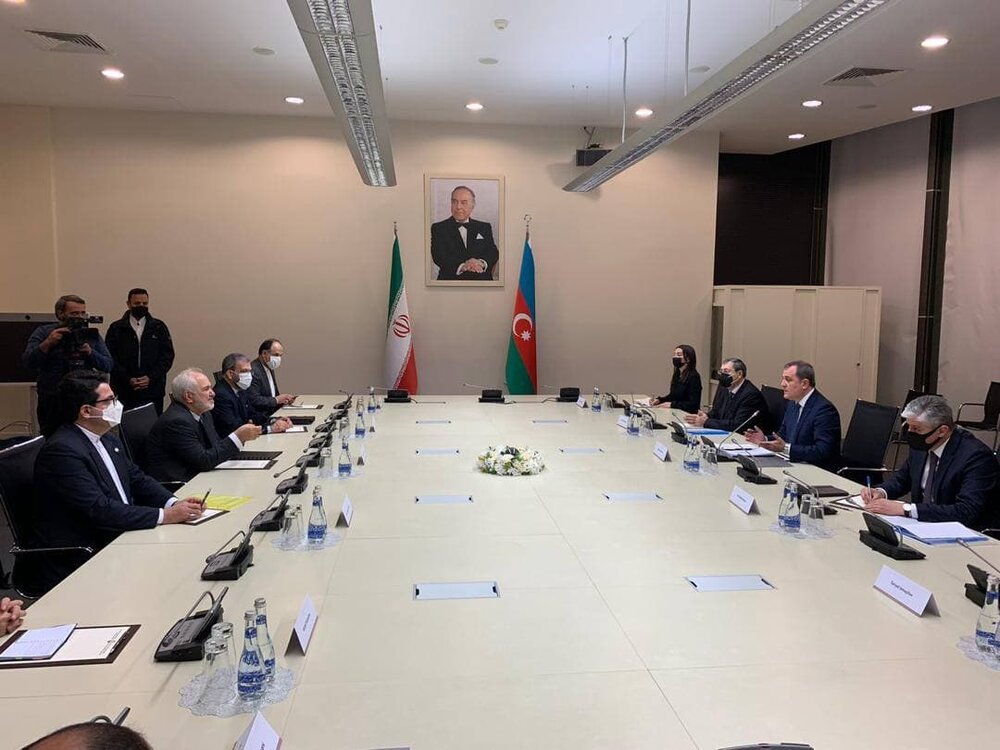Dark side of the deal

TEHRAN – The war between Azerbaijan and Armenia came to an end when the two countries agreed to a Russian-brokered deal on November 10. The deal brought an end to more than six weeks of deadly clashes that killed thousands of people on both sides but it created new concerns about the future of Nagorno-Karabakh and the geopolitics of the broader region.
Although the November deal was welcomed by regional countries as a positive development toward peace and security, it sparked confusion and concerns in some countries in the region that need to be addressed as soon as possible.
The war over the Nagorno-Karabakh region broke out in late September when Armenian and Azerbaijani forces exchanged fire along the contact lines in the disputed region. Initially, the clashes appeared to be an evanescent moment in the decades-long sporadic clashes between the two South Caucasus nations. But over time, it became increasingly obvious that things will be different this time around. While Azerbaijan used a variety of state-of-the-art weapons, especially combat drones, Armenia heavily relied on decrepit weapons that failed to prevent Azerbaijan’s armed forces from retaking large swathes of territories in the disputed region.
The Armenia-Azerbaijan war lasted for 44 days. In the final days of the war, Russia succeeded in bringing both sides of the conflict back to the negotiating table and convincing them into signing a deal to put an end to the deadly war.
On November 10, President of the Republic of Azerbaijan Ilham Aliyev, Prime Minister of the Republic of Armenia Nikol Pashinyan and President of the Russian Federation Vladimir Putin issued a joint statement declaring that they have signed a 9-article deal on ending the war.
According to the deal, Armenia and Azerbaijan agreed to “a complete ceasefire and termination of all hostilities in the area of the Nagorno-Karabakh conflict,” with Armenia admitting to return several districts to Azerbaijan such as Aghdam, Kalbajar and Lachin in a few weeks.
The ceasefire deal allowed Russia to deploy peacemaking forces in the region concurrently with the withdrawal of the Armenian troops for a period of five years, which will be automatically extended for subsequent five-year terms unless either Party notifies about its intention to terminate this clause six months before the expiration of the current term.
The deal established a new route connecting Armenia to the Armenian enclave in the Nagorno-Karabakh region. It also included an article stipulating that “new transport links” between Azerbaijan and the exclave of Nakhchivan Autonomous region, a move that caused huge debates – and in some cases concerns- in the region as the war was being fought far away from Nakhchivan.
The last article of the ceasefire deal vaguely stipulates, “All economic and transport connections in the region shall be unblocked. The Republic of Armenia shall guarantee the security of transport connections between the western regions of the Republic of Azerbaijan and the Nakhchivan Autonomous Republic in order to arrange unobstructed movement of persons, vehicles and cargo in both directions. The Border Guard Service of the Russian Federal Security Service shall be responsible for overseeing the transport connections. As agreed by the Parties, new transport links shall be built to connect the Nakhchivan Autonomous Republic and the western regions of Azerbaijan.”
This article was apparently left out of public discussion intentionally given the sensitivity of the issue. The deal speaks of “new transport links” between mainland Azerbaijan and Nakhchivan but it does not say where and when these links will be established. Will they be constructed near Iran’s border with Armenia? If yes, how will they affect border movements between Iran and Armenia?
Iranian officials were under pressure from public opinion to give a clear-cut answer to these questions. They have tried to soothe concerns in this regard by saying that the Iranian government will defend the country’s national interests. But they did not -or maybe they were unable to - provide any details about the Nakhchivan-Azerbaijan route.
Upon his arrival in Baku on Sunday evening, Iranian Foreign Minister Mohammad Javad Zarif said he will discuss with the leaders of Azerbaijan the situation around the Nagorno-Karabakh region as well as transit routes and corridors but he didn’t say whether these corridors include those connecting Nakhchivan and the western territories of Azerbaijan.
During his visit to Baku, Zarif met with several high-ranking Azerbaijani officials including Ilham Aliyev and Foreign Minister Jeyhun Bayramov.
Zarif discussed with Bayramov issues related to the East-West and the North-South corridors, according to two statements issued by the foreign ministries of Iran and Azerbaijan.
“The Iranian foreign minister finally described the establishment of calm in the region as a great opportunity for mutual cooperation in the transit industry and bringing into operation the East-West and the North-South corridors,” the Iranian statement said.
The Azerbaijani Foreign Ministry confirmed that the two ministers discussed the issue of corridors while implying that the Nakhchivan-Azerbaijan corridor was also discussed.
“During the meeting, the ministers discussed the current situation in the region, the implementation of the trilateral statements of November 10, 2020 and January 11, 2021. It was noted that new opportunities for cooperation have been opened up in the region, including the prospects for the development of North-South and South-West transport and transit corridors,” Azerbaijan’s Foreign Ministry said in a statement on Monday.
The last article of “the trilateral statements of November 10, 2020” deals with the issue of Azerbaijan-Nakhchivan transport links so this issue was likely a part of the two minister’s discussion.
Leave a Comment